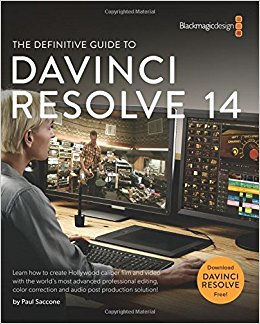News
About “The Ultimate Guide to DaVinci Resolve 14” Part II
If we already knew the first qualities of “The Ultimate Guide to DaVinci Resolve 14” in the first part of this review, today we return to detail a few more qualities of what we will find if we acquire this guide.
After devoting the first chapter to a tour of DaVinci Resolve’s tools, the guide decides to delve more deeply into the options and ways to use the software. Something we should expect, coming so many pages later. It is structured in such a way that it follows the real world process in a logical and orderly manner. In broad strokes it would be: project setup, editing, sound, color and mastering.
Analysis of the edition
On our youtube channel, we have been able to get to know the first chapter of the book, and the basics of the program. As for the editing phase, it not only goes through a basic workflow. It is a complete guide since it solves the series of problems that we can encounter in a real project (not in a demo). That is, in addition to teaching us how to use the tools, it teaches us how to find solutions. A clear example of this would be the way to re-linke our material in case it is moved, or we are operating from another media.
Fairlight Room
One of the new features of version 14 was the addition of the Fairlight room option, and therefore the possibility of working with sound within the program. We remind you that you can find out how this tool works in our Fairlight online course. It is also true that for fundamental aspects of sound, we have added a section in the book where we analyze how to work with sound from the Edit Room: working with markers, muting audio, changing the levels of a clip… But we must remember that this room is not designed for more in-depth work.
The Fairlight room is designed for this purpose, and the Ultimate Guide to DaVinci Resolve 14 addresses the different concepts and workflows. Such as sound mixing or organizing tracks and submixes.
Coloring
Undoubtedly the most recognized room that users come to DaVinci Resolve software for is its elaborate color correction room. The guide devotes no less than four elaborate chapters to color correction. From an introduction to color correction, primary and secondary corrections and the creation of really creative looks, to the detailed use and operation of tools such as bleach bypass, qualifiers, curves, etc., the tools are explained in great detail. The tools in great detail.
And finally…
mastering, or how to close our project in the best possible way. We should not forget that the book also analyzes the XML conform processes. Something that we can find very commonly in professional workflows. On the other hand, the guide also includes specific sections on multi-camera editing and database management. With these last sections, Paul Saccone closes “The Definitive Guide”.
Finally, we wanted to accompany this review with a basic tutorial on how editing works in this program, which you can find in more detail in the guide! We hope you like it.
Marina Montes


